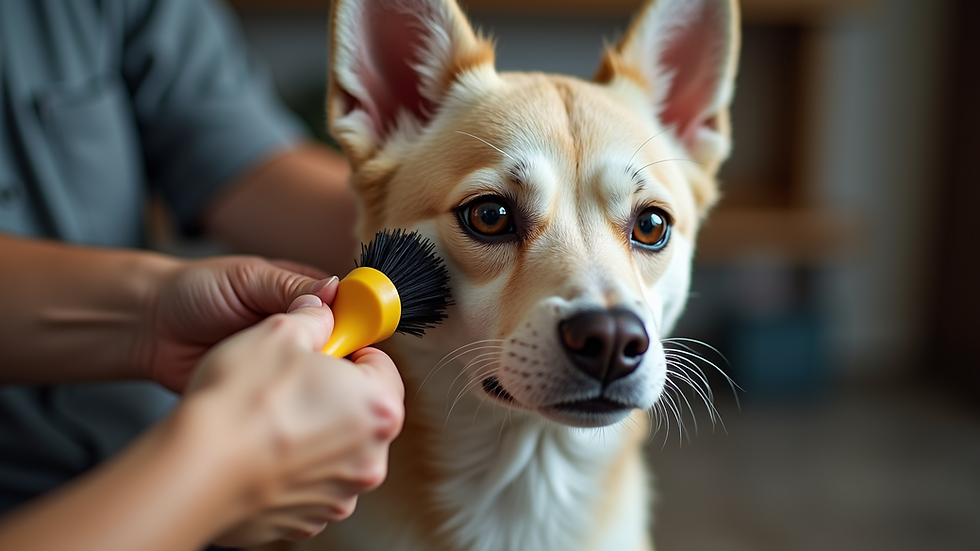Paws and Tips: Your Guide to Excellent Pet Care
- Arsalan Nazar
- Aug 23
- 4 min read
Taking care of a pet is a rewarding experience that brings joy and companionship. However, it also requires dedication, knowledge, and attention to detail. Whether you have a dog, cat, bird, or any other furry or feathered friend, understanding the essentials of pet care can make a significant difference in their health and happiness. This guide will provide you with practical advice and useful tips to ensure your pet thrives in a loving environment.
Essential Pet Care Insights for a Healthy Companion
Proper pet care starts with understanding the basic needs of your animal. These include nutrition, exercise, grooming, and regular veterinary visits. Each pet species has unique requirements, but some general principles apply to all.
Nutrition: Choose high-quality food appropriate for your pet’s age, size, and health condition. Avoid feeding human food that can be toxic, such as chocolate, onions, or grapes.
Exercise: Regular physical activity helps maintain a healthy weight and mental stimulation. Dogs benefit from daily walks, while cats enjoy interactive play sessions.
Grooming: Brushing fur, trimming nails, and cleaning ears prevent infections and discomfort. Some pets may require professional grooming services.
Health Checks: Schedule routine vet visits for vaccinations, parasite control, and dental care. Early detection of health issues can save your pet’s life.
By focusing on these areas, you create a foundation for a long and happy life for your pet.

Creating a Safe and Stimulating Environment for Your Pet
A pet’s environment plays a crucial role in their well-being. Safety and mental stimulation should be priorities in your home setup.
Safe Space: Provide a comfortable bed or crate where your pet can rest undisturbed. Ensure hazardous items like chemicals, sharp objects, and small choking hazards are out of reach.
Toys and Enrichment: Use toys that encourage natural behaviors such as chewing, hunting, or climbing. Puzzle feeders and treat-dispensing toys can keep pets mentally engaged.
Social Interaction: Pets are social creatures. Spend quality time with them daily, and if possible, arrange playdates with other animals.
Temperature Control: Keep your pet’s living area at a comfortable temperature, avoiding extreme heat or cold.
These steps help reduce stress and prevent behavioral problems, contributing to a happier pet.

What does paws mean in slang?
In slang, the term "paws" can have several meanings depending on the context. Commonly, it refers to hands or feet, often used humorously or affectionately. For example, someone might say "Keep your paws off!" to mean "Don’t touch that!" It can also imply clumsiness or a playful warning.
In online communities, especially those related to animals or gaming, "paws" might be used to describe actions involving hands or to refer to cute animal features. Understanding this slang can add a fun layer to conversations about pets or casual chats.
Nutrition Tips for Different Types of Pets
Feeding your pet the right diet is essential for their health. Here are some tailored tips for common pets:
Dogs: Opt for balanced commercial dog food or homemade meals approved by a vet. Include proteins, fats, and carbohydrates. Avoid bones that can splinter.
Cats: Cats are obligate carnivores, so their diet should be rich in animal protein. Wet food helps with hydration.
Birds: Provide a mix of seeds, pellets, fruits, and vegetables. Avoid avocado and chocolate, which are toxic.
Small mammals: Rabbits and guinea pigs need fresh hay, vegetables, and specially formulated pellets.
Always introduce new foods gradually and monitor for allergies or digestive issues.

Grooming and Hygiene: Keeping Your Pet Clean and Comfortable
Regular grooming is more than just keeping your pet looking good. It prevents health problems and strengthens your bond.
Brushing: Removes dirt, loose hair, and prevents matting. Long-haired pets need daily brushing.
Bathing: Use pet-specific shampoos. Frequency depends on the pet’s coat and lifestyle.
Nail Care: Trim nails regularly to avoid overgrowth and discomfort.
Dental Hygiene: Brush your pet’s teeth or provide dental chews to prevent plaque buildup.
Ear Cleaning: Check ears for dirt or infection signs and clean gently with vet-approved solutions.
If you’re unsure about grooming techniques, consult a professional groomer or your veterinarian.
Understanding Behavior and Training Your Pet
Good behavior is a result of consistent training and understanding your pet’s needs.
Positive Reinforcement: Reward good behavior with treats, praise, or playtime.
Consistency: Use the same commands and routines to avoid confusion.
Socialization: Expose your pet to different environments, people, and animals to build confidence.
Addressing Problems: If your pet shows signs of anxiety, aggression, or destructive behavior, seek advice from a trainer or behaviorist.
Training not only improves obedience but also enhances your pet’s mental health.
Final Thoughts on Providing the Best Care for Your Pet
Caring for a pet is a lifelong commitment that requires patience, love, and knowledge. By following these guidelines, you can ensure your pet enjoys a healthy, happy life. Remember, every pet is unique, so tailor your care to their specific needs.
For more detailed advice and expert recommendations, visit paws and tips, a valuable resource for pet owners seeking to improve their pet care skills.
Your pet depends on you for their well-being. With the right approach, you can build a strong, loving relationship that lasts a lifetime.




Comments